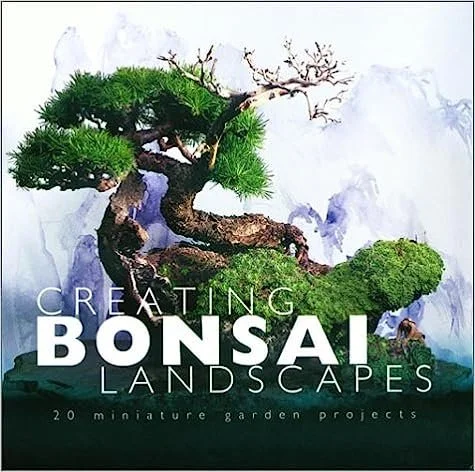Penjing, the Chinese art of creating a miniature landscape in a container, dates back to at least the 7th century when historical records refer to stones and plants arranged in containers to form artistic scenes.
Bonsai is more familiar to most Americans, but penjing is the older art form from which bonsai evolved. "Bonsai" means a "tree in a pot," whereas penjing refers to a "landscape in a pot".
Penjing artist Su Chin Ee uses plant material and natural stone to portray bamboo groves on a rocky island or a waterfall flowing through a volcanic outcrop. In this book she details 18 miniature landscape projects in great detail.
"As I have gained confidence over the years, I have learned how to create a true representation of a natural scene, using planting techniques and adding details that deceive the eye into believing there is much greater depth or height to the landscape," Ee explains.
Handmade rocks formed from chicken wire and ciment fondu provide the basic structure for many of her landscapes. As they weather, their appearance becomes more natural and rugged.
For each of the 18 landscapes profiled in her book, Ee lists the materials and plants used and provides step-by-step photo-illustrated instructions for constructing the landscape and pruning the plants.
The Landscapes
Shan Shui -- Mountain Water
Ba Xian -- Eight Immortals
Shi-Liu -- Abundance
Gong Ji Shan -- Rooster Mountain
Li Bai -- The Dreaming Poet
Feng Hong -- Red Wind-The Phoenix
Ping Guo -- Peace
Jin Shi -- Metal and Stone
Lu Long -- Green Dragon
Mei Hua -- Flowering Cherry
Cai Shen -- God of Riches
Yin Meng Yang -- Yin Dreams of Yang
Quan Yin -- Bamboo Retreat
Long Shu Gui Shui -- Dragon Tree, Tortoise Pond
Shi Bu Tian -- Stne Steps to Heaven
Deng Hua -- Lantern Flowers
Fei Long -- Flying Dragon
